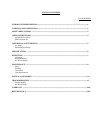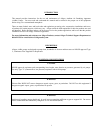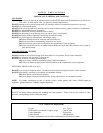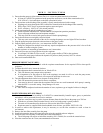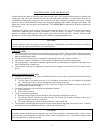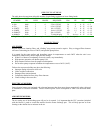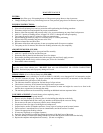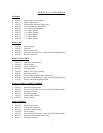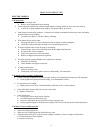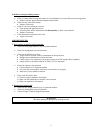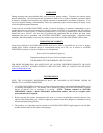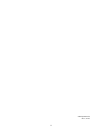
T R O U B L E S H O O T I N G
ELECTRIC MODELS:
1)
If motor fails:
• If motor is extremely cold.
o Bring to room temperature before starting.
• Ensure respirator and hose are connected when pump is running; failure to do so may cause lock-up.
o Loosen all six pump endplate bolts slightly. Re-tighten and try to run unit.
• Some motors are thermally protected. An electrical overload or mechanical failure may cause a thermally
protected motor to stop running.
o Let motor cool down (15-20 min.) and try restarting.
• If the motor fails to start or hums.
o Pull plug and check for correct electrical current as shown on motor nameplate.
o Check the wiring instructions on motor case or on thermal plate cover.
• If electrical motor hums but the air pump is not turning.
o Turn off motor, loosen all six end plate bolts, then re-tighten and start unit.
o If unsuccessful, remove endplate.
o Check vanes and rotor for free movement.
o Broken or chipped vanes should be replaced.
• If rust has formed in pump chamber due to exposure to moisture.
o Sand down if necessary.
o Clean chamber with approved solvents.
• If pump becomes noisy.
o Check for sticking vanes.
o Flush pump, if necessary replace vanes (see disassembly for instructions)
2)
If output air hot or pump is running hot:
• If there is a drastic temperature increase on pump surface or air temperature coming out of the respirator.
o Check alignment of pump rotor and housing. (see Maintenance section)
• If outlet pressure is too high.
o Adjust pressure relief valve, while maintaining sufficient air flow to the respirator.
• Check inlet and/or exhaust filter for excessive dirt or dust.
o Replace if necessary.
• Check airline hose.
o Loosen hose coils to allow heat to dissipate.
o Use NIOSH approved airline hose only.
o Do not use more than 100 feet of airline hose per respirator user.
o Joining separate lengths of airline hose to complete 100 feet will increase pressure and temperatures.
3)
If there is a rise in outlet pressure:
• Check for kinked airline hoses.
• Make sure only NIOSH approved airline hoses are used
• Adjust pressure relief valve, to adjust for any change in number of users, or lengths of airline hose.
o Check condition of filter elements.
o Replace if necessary.
8




